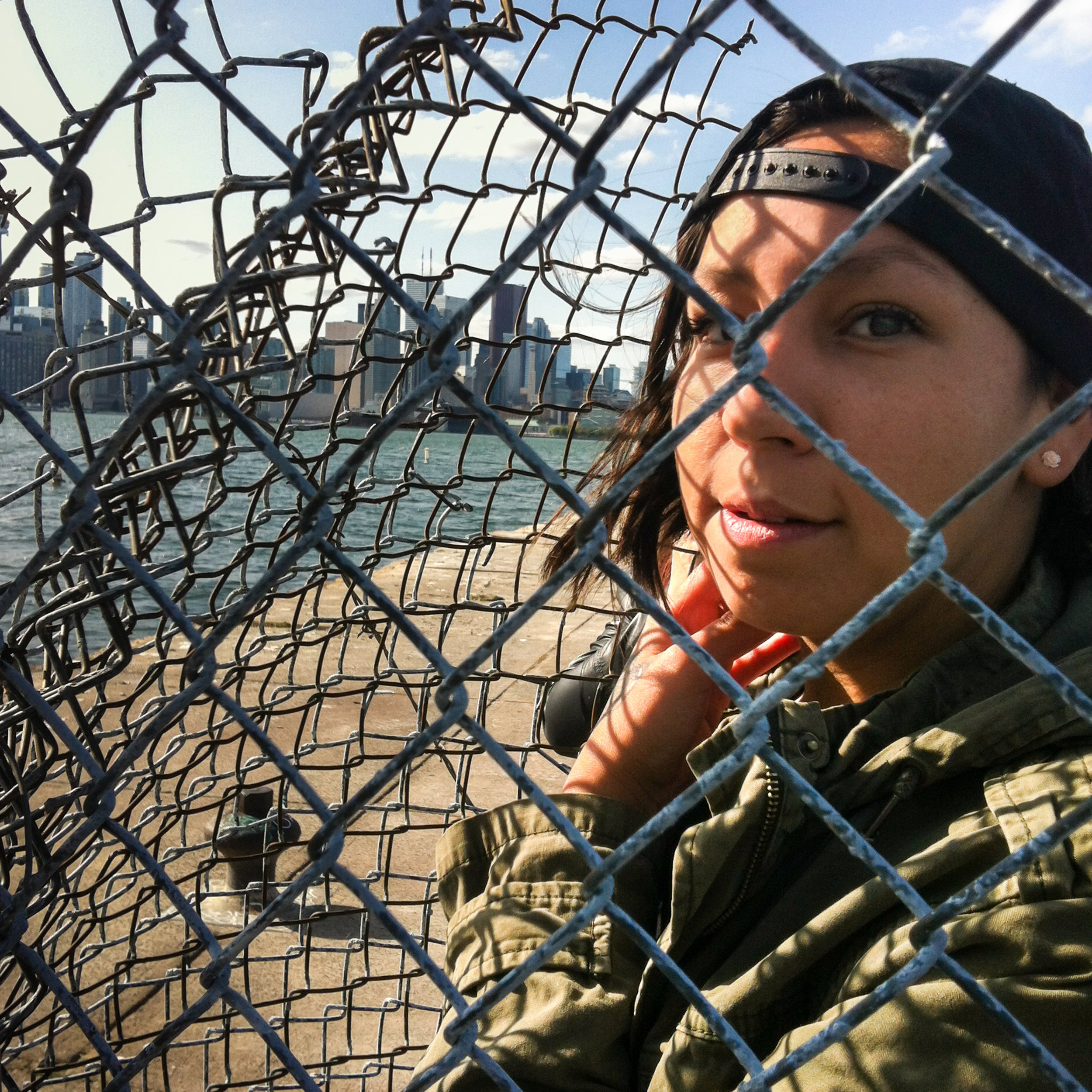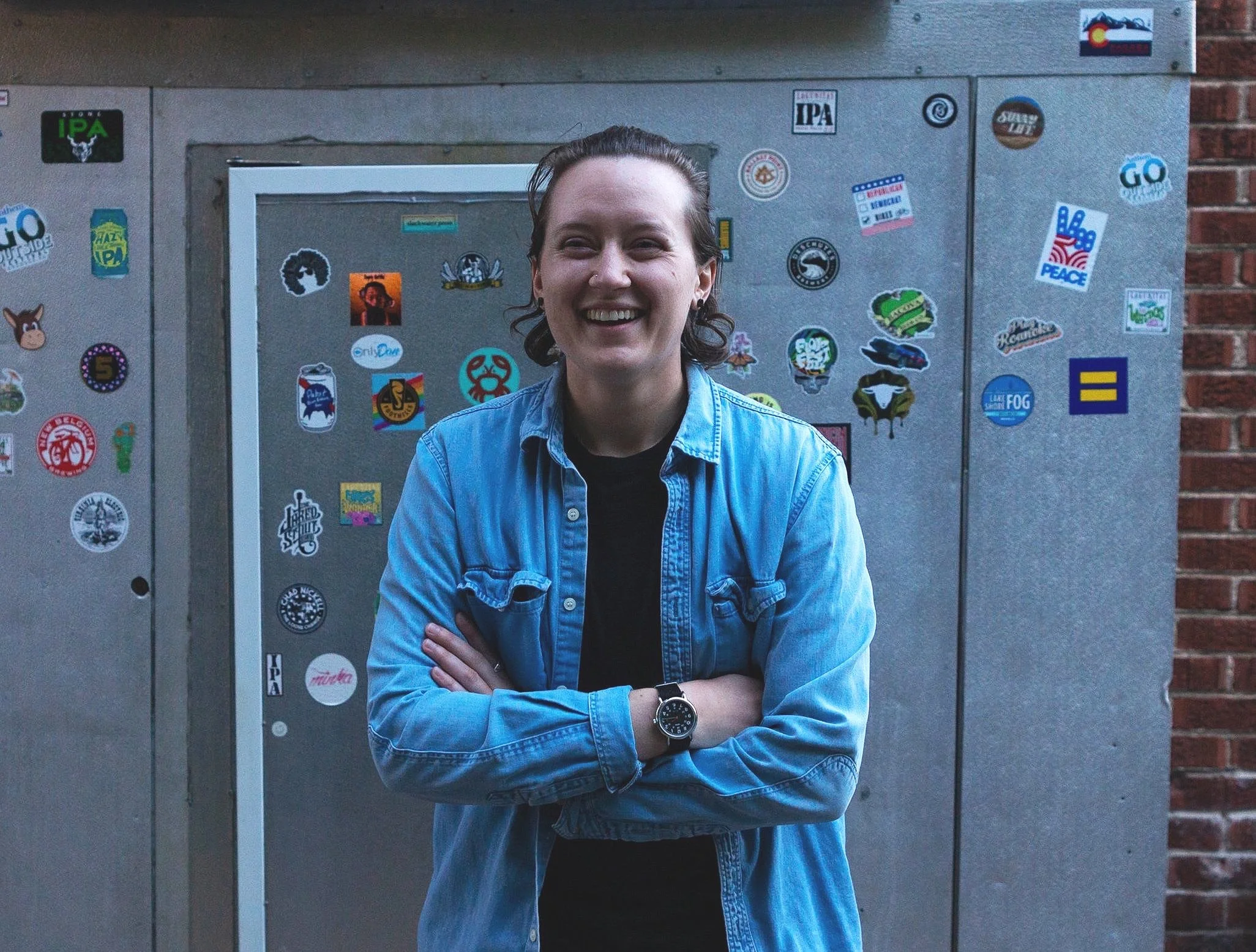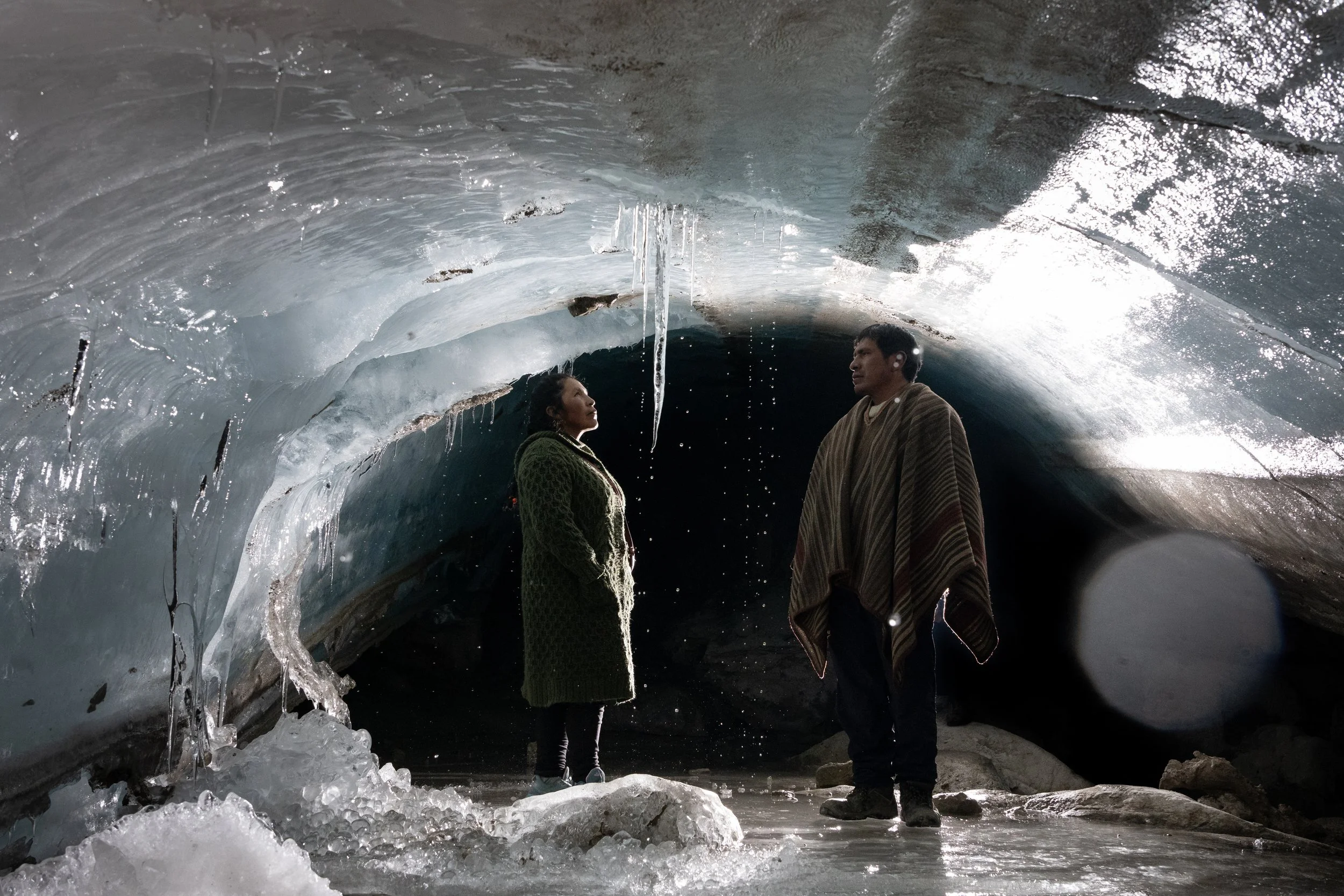PHOTO: Troy Obed
Perched high, adjacent from the exhibition hall, is a large image of three boys: The photo captures them in mid-frame, immortalized against a backdrop of trees and an undistinguishable path, backs turned, walking, and their arms wrapped around each other’s shoulders in solidarity.
Brandon Gilbert is the 15-year-old non-indigenous boy centred on the far left of the picture, while the other two, being his adopted Anishnaabe brothers, Bronson McLaughlin-Assinewai, 13, and Jeremiah McLaughlin-Assinewai, 16, are centred to his right. According to Gilad Cohen, founder and executive director of JAYU, this is the first image attendees are expected to see upon exiting the exhibition space. The photo invokes a sense of camaraderie, healing – and eventually too, reconciliation – amongst Aboriginal and non-Aboriginal people.
“In a way, we wanted to represent what reconciliation could look like, or what it could, visually, be manifested as,” he added.
PHOTO: Jeremiah McLaughlin-Assinewai
This photo, including others, shot entirely on smartphones, was taken during the course of a two-week program, and is now featured in the third installment of JAYU’s iAM exhibition – a two-month long public gallery where 100 per cent of the proceeds go back to the of indigenous youth involved. In partnership with the Native Canadian Centre of Toronto, the culmination of their work – 10, 000 photos narrowed down to 18 images – currently hangs along one side of a hall, and opposite to them, black and white portraits of the nine students enrolled in the photo mentoring program.
These themes of transparency or subtle nodes towards introspection, where in this case, the artist’s work is mirrored in their portraits, as Coden says, are intentional.
“You’re in their space,” he said. “This exhibition is a culmination of all that: it’s their photography here on display and their audio, or videos stories telling us what reconciliation means to them. [Essentially], it’s an awareness piece.”
However, their growth was contingent upon the work of their teachers, who mentored them on the ways of storytelling.
PHOTO: Hunter Blackbird
Back in August, local photographers, ranging in experience and social notoriety, ran workshops – on junior-level techniques like lighting, perspective, the rule of thirds – for iAM’s nine participants enrolled. Some in particular were Toronto-based photographer Adeyemi Adegbesan, also known as ‘SoTeeOh,’ and Ben Marans, Photographers Without Borders’ (PWB) very own school manager, to name a few.
Ironically, iAM’s run falls on Canada’s sesquicentennial year. But for JAYU’s founder, this moment could provide attendees of the exhibition with a different outlook when looking at indigenous life.
“This offers an alternative perspective for other people to be aware of who had to sacrifice, and who had to give up parts of themselves and parts of their history in order for us to be able to celebrate 150,” said Cohen.
JAYU’s iAM exhibition is currently on display at the Daniels Spectrum and will run until January 7 of next year.
PHOTO: Christopher Wyldes
For more information about the exhibition, to make a contribution and other ways to support the volunteer-run charity, please visit the main website.














